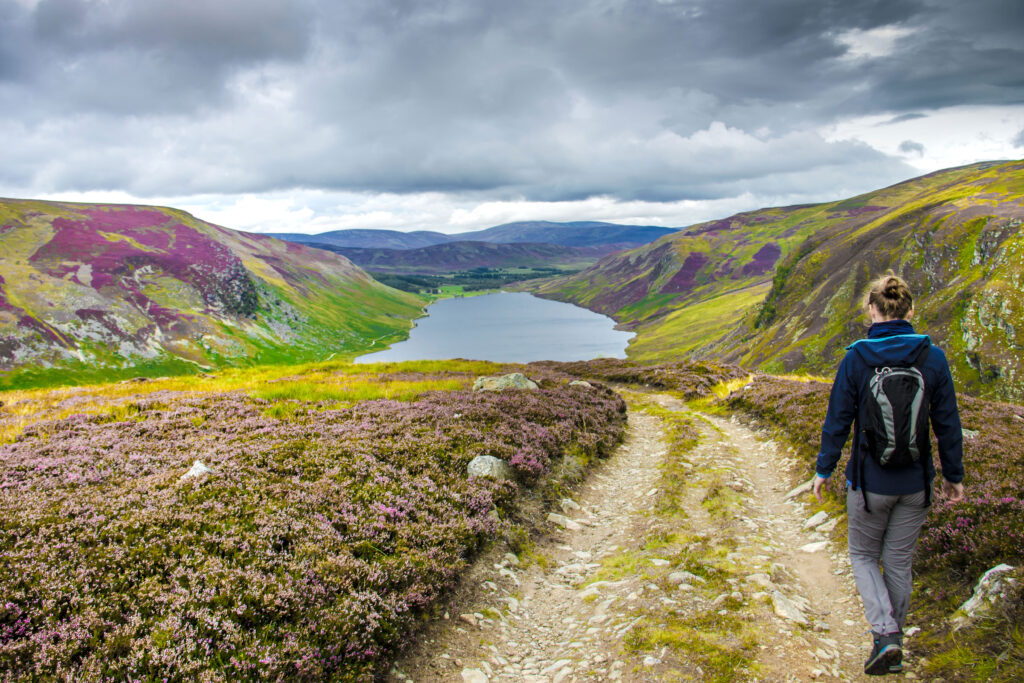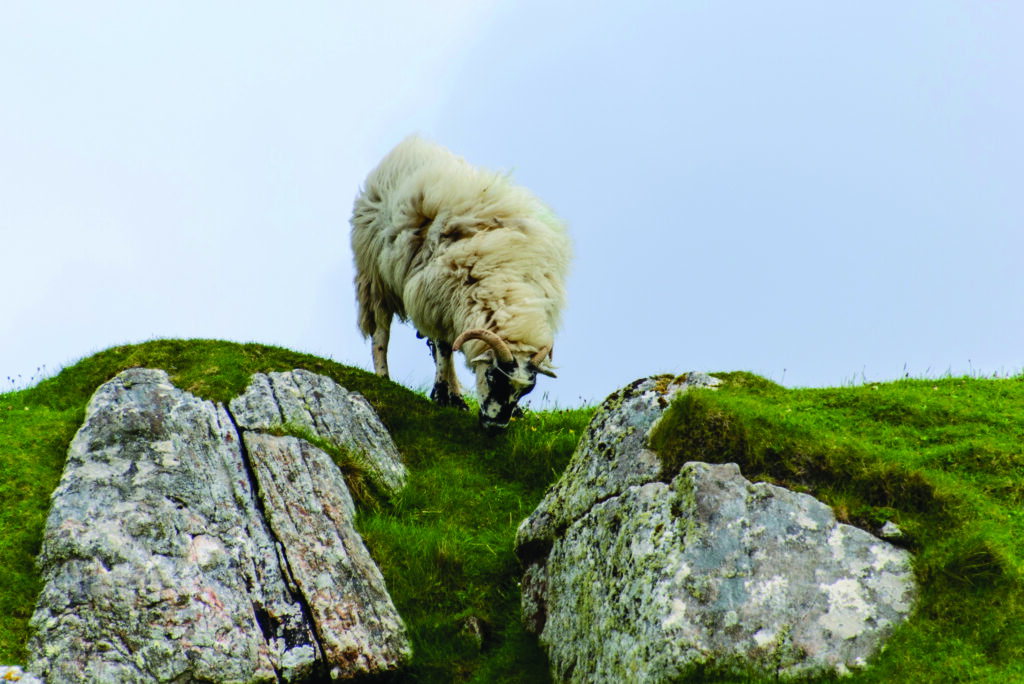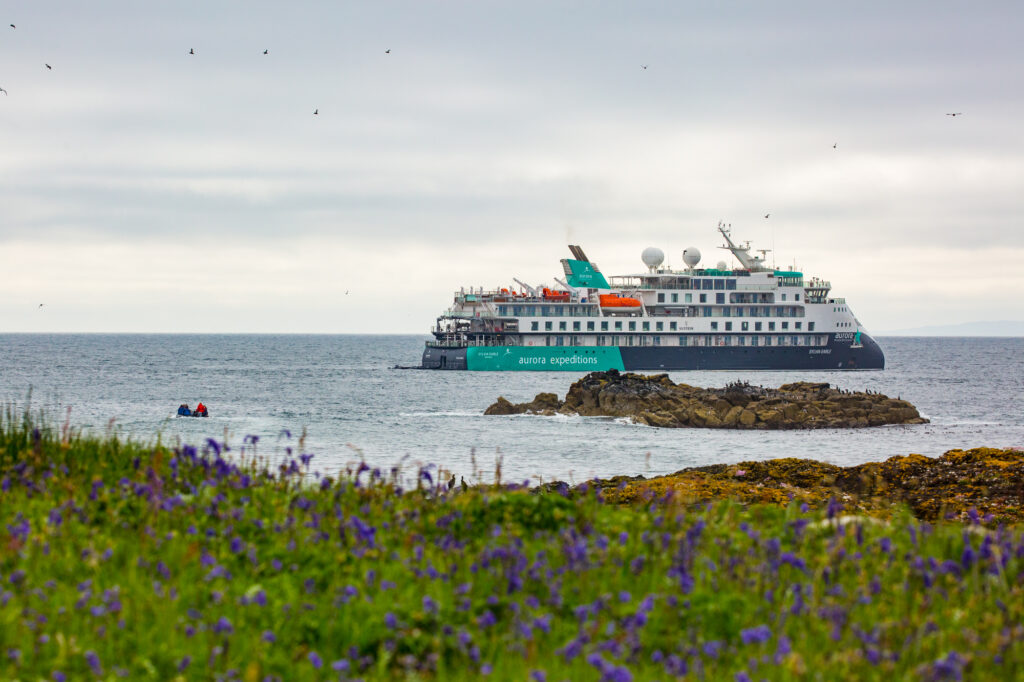Whether you’re a wildlife lover who enjoys experiencing native fauna on your overseas adventures or a dedicated ornithologist looking to tick Scotland’s unique avian species off your birdwatching list, Scotland will not disappoint.
Scotland’s rugged highlands, craggy coastlines, remote islands and verdant inland areas invite a myriad of birds to take up residence. From the majestic golden eagle (the unofficial national bird of Scotland) to the adorable puffin to the dainty, black-necked grebe, there is a colourful array of birdlife in the air, land and sea to witness as you journey through Scotland with Aurora Expeditions.
Use this handy birding guide to Scotland to discover more about the country’s most mesmerising avian species.
Scotland's Birds of Prey
Scotland’s birds of prey are remarkable avian predators that demonstrate dazzling displays of agility and fearless feats to catch their prey. They offer some of the most commanding sights in the skies above the mountains, lochs and seas.
White-tailed eagles
While golden eagles may the most popular Scottish birds of prey, the white-tailed eagles are the country’s largest. In fact, it’s the UK’s largest bird of prey. Also known as a white-tailed sea eagle, this massive bird draws attention for its size and distinctive white tail, rectangular-shaped wings and yellow beak.
Did you know that the white-tailed eagle was once extinct in Scotland? Thankfully, it was reintroduced to the west coast in the 1970s and the east coast less than 20 years ago. You can find the white-tailed eagle along Scotland’s west coast, including the Isle of Sky, Isle of Mull and Isle of Lewis. With any luck, you’ll catch it fishing, swooping from great heights to pluck its dinner from the sea.
Red kites
Thanks to conservation efforts in Scotland, you can still see red kites soaring in its skies. Once on the brink of extinction, there are now 300-350 breeding pairs in Scotland.
The red kite is a graceful reddish-brown bird of prey in Scotland with a forked tail that looks more like one tail than two. Spot the red kite from its almost two-metre (6.5-feet) wingspan; you’ll often find them circling roadside carcasses.
Common places to see red kites include Scotland’s Central Belt, the Scottish Borders, Dumfries and Galloway.
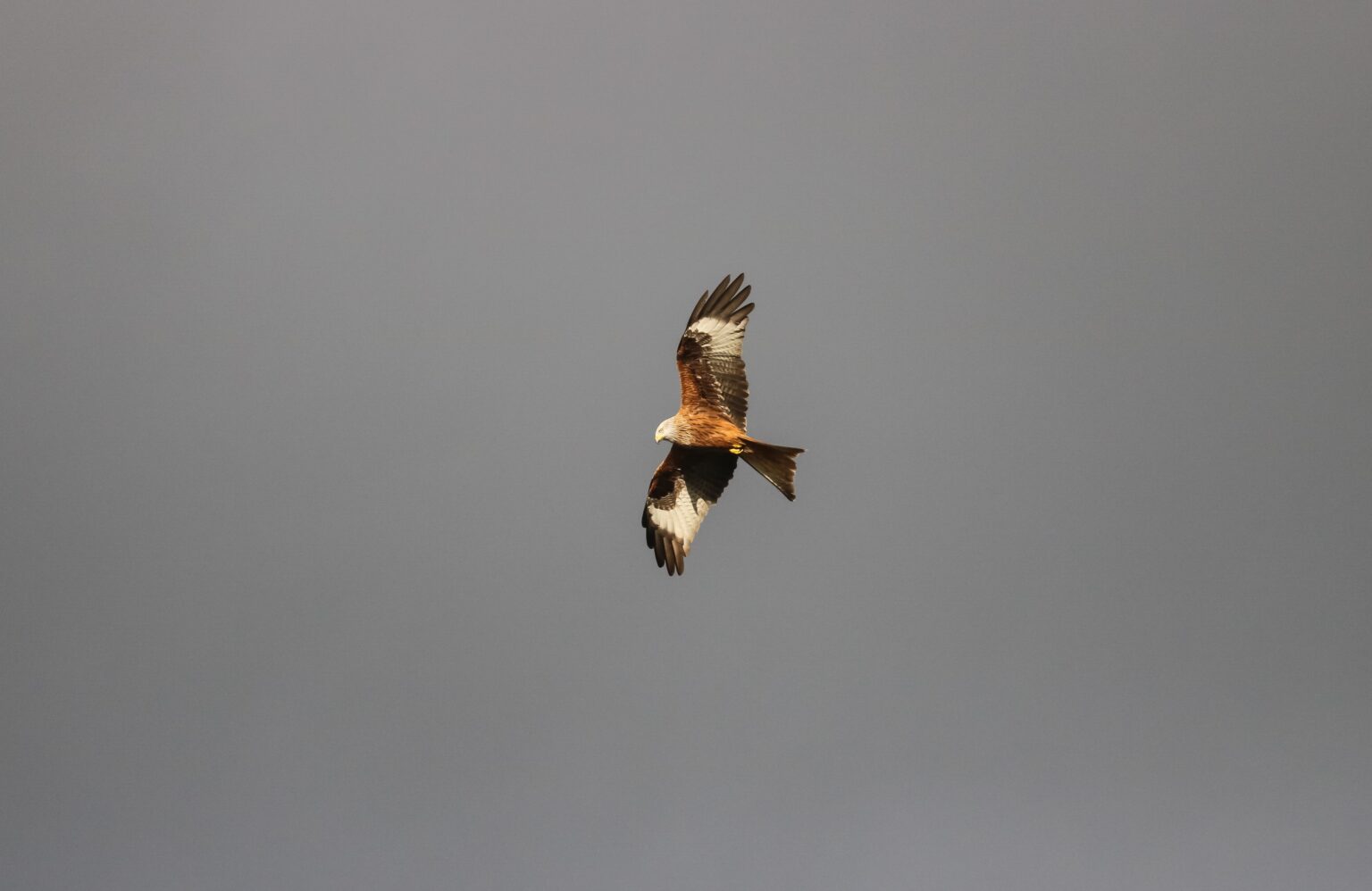
Golden eagles
Spanning over two metres wide (7.5 feet), the golden eagle has an impressive wingspan. Coupled with its distinctive golden crown, it’s become one of Scotland’s most iconic birds.
The golden eagle’s hunting prowess is incredible to witness, thanks to its sharp, far-reaching vision to spot prey. It loves mountain hares, small mammals and even other birds. Consider it your lucky day if you spot one golden eagle, as perhaps their partner is nearby. They typically mate for life.
Golden eagles love Scotland’s remote mountainous regions, including the Scottish Highlands, the gorgeous Isle of Skye, and the rugged Cairngorms National Park, which you can experience on our Cairngorms National Park 8-day trekking adventure.
Peregrine falcons
A stunning bird, the peregrine falcon is the Usain Bolt of the skies. Known for their high-speed hunting, peregrine falcons can reach up to 385 kilometres per hour (240 miles per hour), dependent on the prey they’re chasing!
The peregrine falcon’s blue-grey back and wings make their white faces and light, speckled underbelly pop in a clear blue sky, making them a photographer’s dream!
It’s easiest to spot this Scottish bird of prey on the cliffs, inland mountains and rocky quarries. You can even catch a glimpse of them around tall buildings in urban areas like Edinburgh and Glasgow.
Honorable mentions
Cairngorms National Park Explorer
Scottish Sea Birds
Puffins
Perhaps the most beloved bird to spy when travelling through Scotland and its Isles, the puffin is an adorable sea bird that amuses and enchants. There’s no mistaking the ‘clown of the sea’. Its colourful, oversize beak, orange feet, black wings, white chest and rolling walk are so distinctive.
While seemingly stocky, the puffin’s compact body aids its ability to dive for its supper, while its wings allow them to ‘fly’ underwater. That said, puffins require extra effort to stay in the air. And that oversized beak? It’s the perfect size to bring back fish for the whole family, including adorable pufflings!
Puffins nest in burrows and alongside cliffs on several Scottish Islands. This includes the Shetland Islands, Firth of Forth and Isle of Staffa. Your chances of seeing them are good on our Wild Scotland sailing!
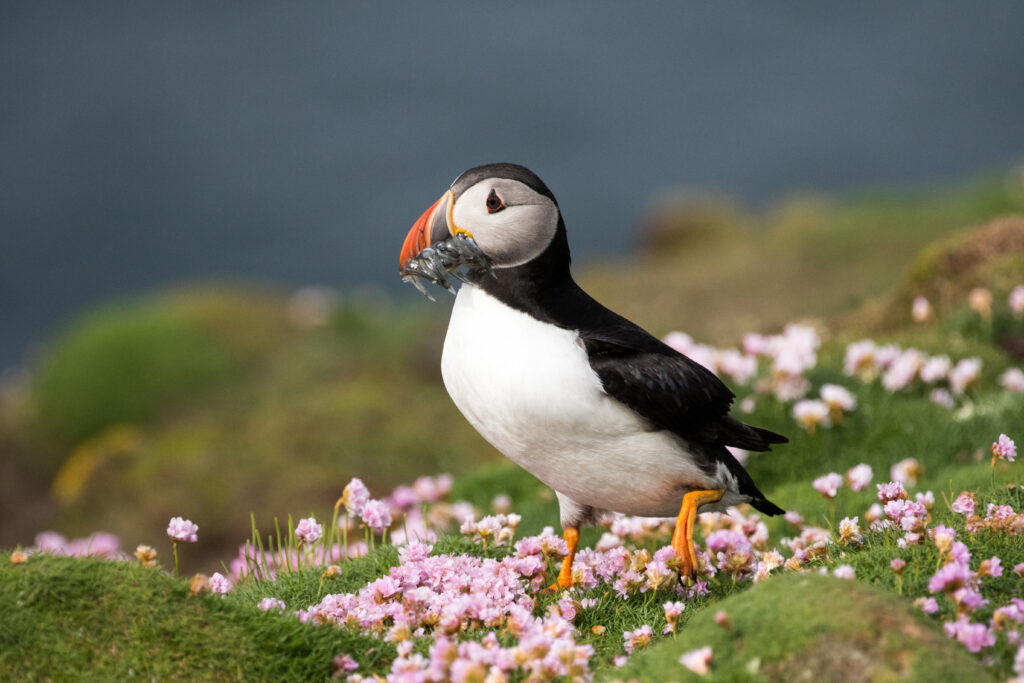
Northern Gannets
Scotland has the largest concentration of northern gannets, Britain’s largest seabird. Northern gannets impress with their skilled feeding routines. They fold their wings tight to their body and dive headfirst from great heights and great speed into the frigid sea.
The northern gannet’s long neck affords those acrobatic skills. Their bright white plumage, yellow patches on their head and long, black-tipped tail make them easy to identify.
Black Guillemots
This jet-black bird with distinct white patches and red feet is a common sight in the Scottish skies. The black guillemot is a medium-sized seabird that forms a monogamous partnership, returning to the same nesting site annually. Their red feet act as a signal during courtship displays: the brighter the male’s feet, the bigger the catch.
Another fascinating black guillemot fact is that they transform dependent on the season. During the Northern Hemisphere summer (breeding) months, they turn heads with their striking black-and-white plumage. When autumn rolls around, however, they moult, leaving a mottled coat.
Catch black guillemots on Scotland’s rocky coast and offshore islands, including Orkney Island, the Isle of Mull and Shetland Islands. They tend to be in shallower waters as their red feet make fabulous paddles for propulsion towards their prey, mainly small fish and crustaceans.
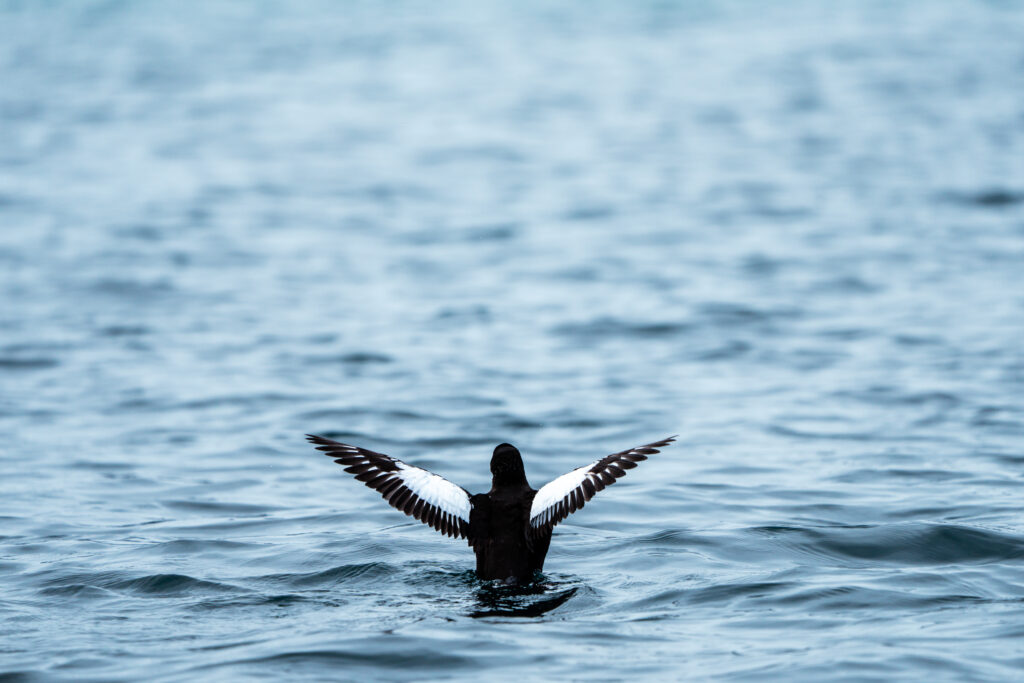
Great skuas
Called the Bonxie in Scotland, the great skua, or Arctic skua, is a large seabird with a larger reputation. Earning their nickname as the ‘pirate of the sea’, great skuas are aggressive, opportunistic and fierce. It can be thrilling to see them engage in aerial battles as they attempt to pillage and steal. Watch them force other birds – including birds of prey – to drop their catch or even regurgitate it mid-flight! They’ll then swoop in skilfully to claim their stolen goods.
Besides its intolerable behaviour, you can also identify the mid-sized great skua from its light-and-dark mottled plumage and the flashes of white on its wings. Its wingspan can reach 1.3 metres (4.5 feet); it’s the great skua’s most powerful weapon.
See great skuas around Scotland’s offshore islands during the summer months. Shetland and the Orkney and popular great skua hangouts. Discover more about the country’s wild isles here.
Honorable Mentions
Should you be keen to add more Scottish seabirds to your list, look for the Manx shearwater at night (Scotland is home to a third of the world’s population), the albatross-related northern fulmar, and adorable snow bunting (technically an open-area bird).
Wild Scotland Cruise
Scottish woodland birds
Red Grouse
The mottled reddish-brown feathers of the stout red grouse perfectly blend into the heather moorlands it likes to roam. From April to June, red grouse make gobbling mating calls that also sound they could be laughing at you. Which it could be doing, as they often surprise humans, so brilliant is their camouflage. Red grouse males grow an out-of-place looking red comb above their eyes for breeding, not unlike a toupee.
Spot them around 350-700 metres (1150-2300 feet) above sea level on Scotland’s moors and highlands or hanging around Scottish estates. Sadly, their popularity as a game bird for grouse shooting and the loss of heather moorlands is putting the red grouse, and its cousins, the black grouse, ptarmigan, and capercaillie, at risk.
Long-eared owls
A sought-after species for bird watchers, thanks to their nocturnal activities and excellent camouflage, the long-eared owl is a mid-sized owl species, smaller than a wood pigeon. They feast on mice, voles and other small animals and reclaim old bird nests as their own.
Despite being called a long-eared owl, the tufts seen on its head are not ears. Instead, they help them concealed and raise them when alarmed. The long-eared owl doesn’t need extra ears, anyway; it’s well-known for its exemplary hearing, used for hunting. Other interesting features include its deep orange eyes and mottled brown plumage.
The best opportunity to tick the long-eared owl off your twitcher list is with patience in Scotland’s woodlands and coniferous forests.
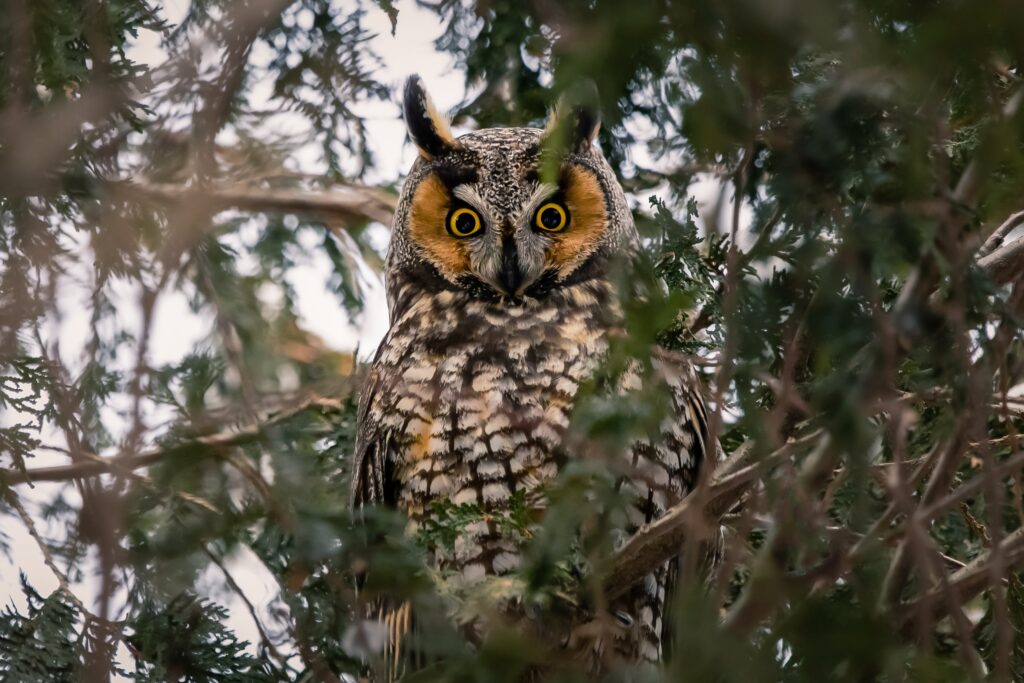
Spotted woodpecker
If there was a competition for Scotland’s prettiest bird, the spotted woodpecker would be a strong contender. A striking bird with pied black and white plumage, mask-like facial markings, and a red crown and rump (males only) make it an attractive species to spy.
If you’re in the Scottish woodlands and hear a fast du-du-du-du hammering sound, pay extra attention. Like an ice cream scoop, the spotted woodpecker’s chisel-like bill is the perfect tool to drill into tree bark for insects and larvae. This woodland native also makes an unmistakable call, like a dog with a squeaky toy.
Honorable mentions
Scottish water birds
Grey herons
Enjoy the grey heron’s slender features and regal elegance while visiting Scotland’s lochs, rivers, wetlands and estuaries. While appearing demure in features, it’s really a façade, as grey herons have a dagger-like bill to catch fish, ducklings and other aquatic prey.
Patient hunters, grey herons can remain motionless for long periods before striking with incredible reflexes and precision. It’s unbelievable to watch.
Grey herons are seen across Scotland, though there are fewer on the islands. The east coast’s Montrose Basin is popular, with approximately 70 grey herons residing there.
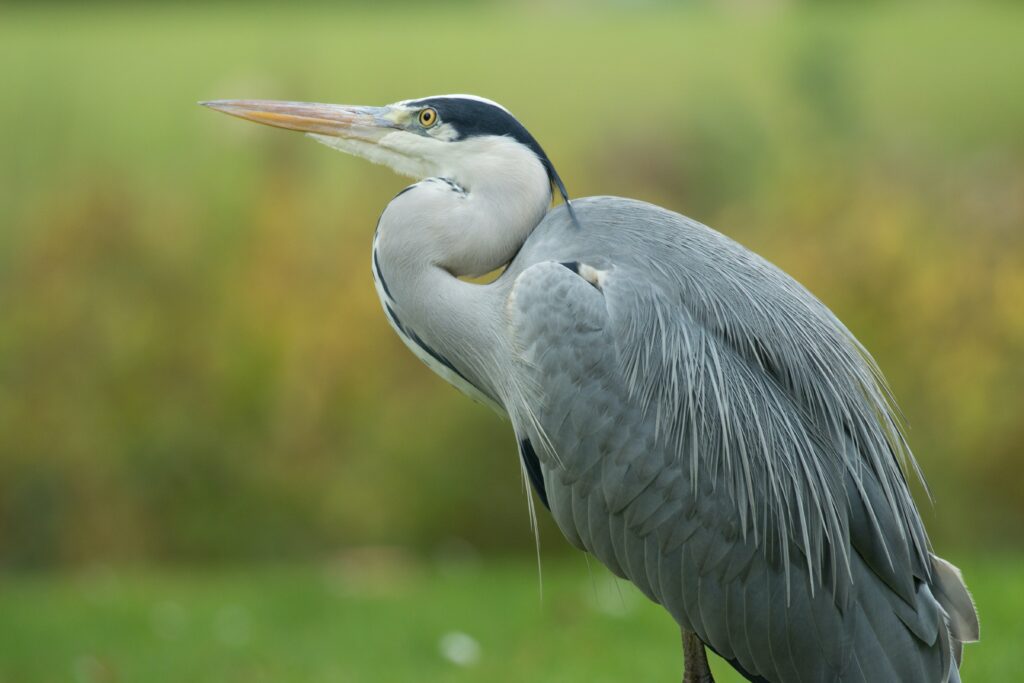
Red throated-divers
Forget the breakfast show weather reader – in Scotland, you can let the red-throated diver predict whether you’ll need a raincoat or not. Nicknamed the ‘rain goose’, some Scots believe that the red-throated diver’s short cries indicate fine weather, while their longer, more mournful sounds are a warning that wet weather is on the way.
With red necks that contrast with their brownish-grey feathers, this medium-sized waterbird is an appealing species to see in the wild.
While ungainly on land, red-throated divers are graceful in Scotland’s freshwater lochs and inland lakes in summer and along the coastline in winter. The ‘diver’ in their name refers to their fish-catching skills, helped by a blade-like bill.
Black-necked grebes
You can spy the demonic-looking black-necked grebe in Scotland’s winter months. This small waterbird has a black head and neck, angry red eyes set against, and glorious golden ear tufts during their breeding season.
Black-necked grebes are known for their spectacular mating rituals – a cute aquatic vegetation exchange, like chocolate gifting by lovestruck couples on Valentine’s Day.
While seen across Britain, catch them in Scottish lochs, marshes and coastal lagoons. Surprisingly, black-necked grebes are similar to their relatives, the penguin-like little grebe; many assume they are bigger.
Honorable mentions
Scotland Cruises & Trekking
While Scotland’s woodlands, heathers, lakes and coastline are chock-full of fascinating birds, you may, of course, spot some delightful Scottish garden birds, too. From the lively blue tit to sparrows, starlings and wrens, there are ample opportunities to enjoy birds across this rugged land. Don’t forget to bring your binoculars!
For your chance to encounter these amazing birds, enquire about our Scotland cruises today. And don’t forget to read our top wildlife photography tips before you depart!
Featured Expeditions
Discover Scotland on a discovery voyage that navigates its wild isles. For a limited time, enjoy up to 15%* off select departures – request a quote here. For our full range of Arctic & Beyond itineraries, download or order our latest brochure.
Wild Scotland
Discovery
Discover the wild isles of Scotland, from the windswept Hebrides, inhabited for over 8,000 years, to the verdant Orkney Islands, where ancient Neolithic and Viking sites conjure images of civilisations...
12 Days
From AUD $15,295.75/pp

